|
In Russkie narodnye kartinki, Olga Baldina explains the genesis of the lubok (translated):
"The lubok was birthed in one of the most complex period of Russian art, at the end of the 17th and beginning of the 16th
Centuries, when the secular and the realistic came to replace the long-dominant art of the Orthodox Church...
"But even futher, even more: a new life, new surroundings, new necessities of the time forced the entry of alternative images
and motifs."
Indeed, most early lubki were very religious in nature. Others were used for formal purposes, such as the Denisov family tree
below.
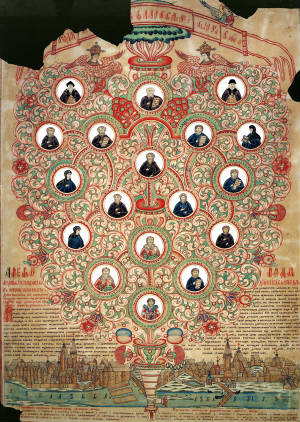
Source: http://alkonost.onego.ru/history/lubok.html
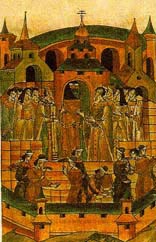
Source: http://www.extech.ru/s_e/found/nf/rgnf0.htm
Evolution
With time, however, the popularity and ease of use of the lubok's simple and unpretentious imagery made it the favorite of
social commentators. Such commentary ranged from simple (but amusing) notes on life to highly charged political satire.
As Baldina chronicles, "In the pictures...the artists depicted romances, dance lessons, spur of the moment kisses, short everyday
scenes, all of which played out on the background of nature."
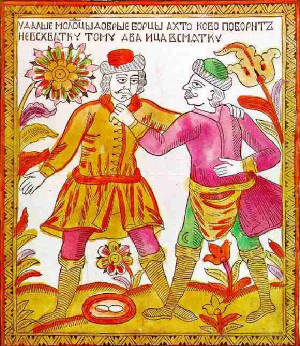
Depiction of a fight.
What is truly fascinating is the huge number of images that depict males as looking very similar to Peter the Great. Though
images of Peter (mostly derisive) are literally without count, those unrelated to his reign continue to bear his countenance.
For instance, the above image. Another such:
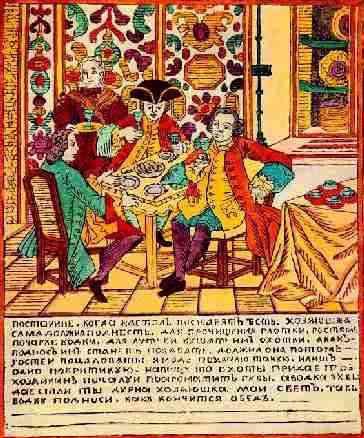
Whether this was intentional or not is hard to speculate. For those lubki where the character resembling Peter is portrayed
positively, it can be inferred that the image of Peter is one of modernity and culture. For those that portray him negatively,
it can represent the decadence and impropriety of Peter's reforms. It is also possible that the image of the mustachioed gentleman
with the long hair is just a very simple way of depicting contemporary men. Baldina, for one, offers no insight into the question.
"Institutional" Uses
Generations after Peter, the lubok continued to be immensely popular. Boguslawski includes several images in a series, put
to rather pro-establishment poetry.
Also, it is evident from lubki like the one below (part of the series of such images, professionally printed) that it was
not necessary for lubki to be simple or crude in their spelling or presentation. The usage of the jat' in this lubok
(which portrays the hussar as a noble state servant) makes a statement in itself.
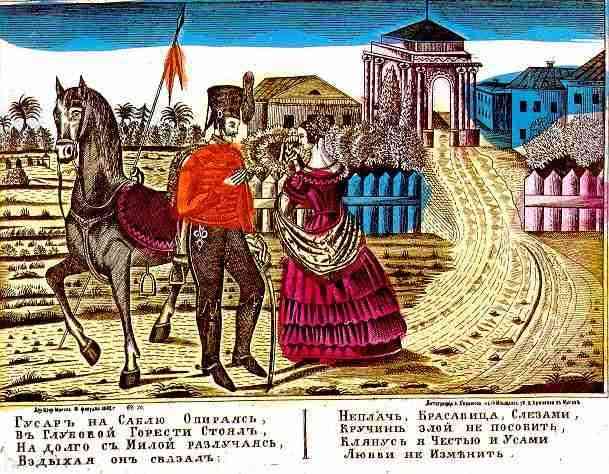
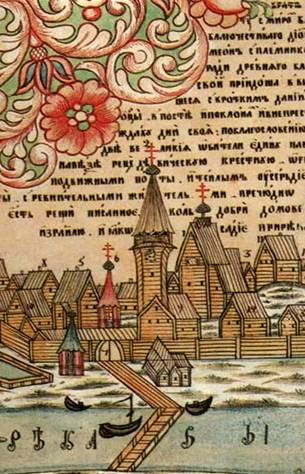
This old lubok very formally depicting a city involves immaculate spelling and punctuation (accent marks, etc.). Amusingly,
I had to look hard to make sure there was a jat' before noticing the giant one in the river.
Source: http://bibliotekar.ru/rusLubok/index.htm
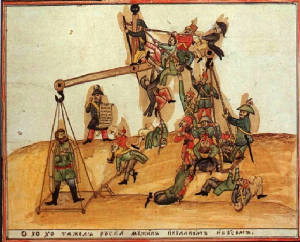
This pro-government lubok depicts the power of the Russian muzhik, or peasant, in terms of his being able to outweigh
the combined forces of France, England, Turkey and their allies. Again, the jat' is evident.
The lubok today (kind of..)
Here and there, it is still possible to find lubki being made to address contemporary issues. Of course, these are very rare,
and have long ago fallen into disfavor when compared to the ever-present modern political cartoon. Nevertheless, they do appear.

Needless to say, the issues being discussed are usually much less weighty than religion, war, or insurrection.
Source: http://www.sql.ru/forum/actualthread.aspx?tid=330882
|